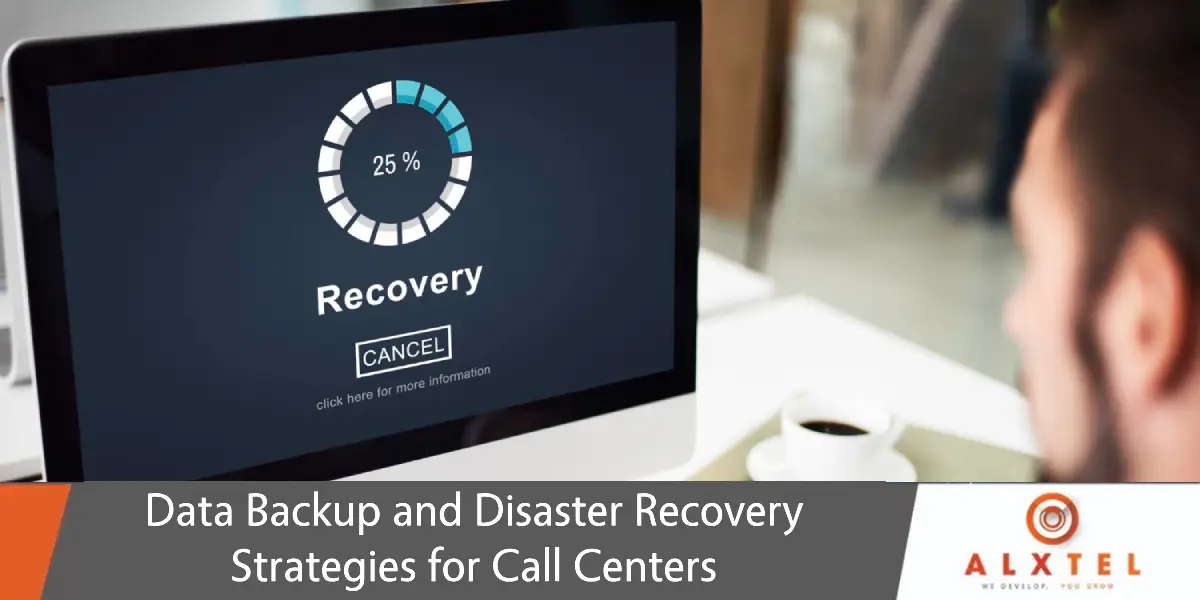What is Data Backup and Disaster Recovery?
Data backup and disaster recovery have become key components in assuring the resilience and continuity of enterprises and organizations in the fast-paced digital world, where information reigns supreme. These two processes work in tandem to keep the information pulse steady, providing a safety net against unforeseen events that could otherwise result in data loss and operational downtime.
Data backup refers to the proactive practice of making several copies of critical data and keeping them in a secure location away from the source. The primary purpose is to create a fail-safe system that can be used in the event of data loss, whether caused by accidental deletion, hardware failure, cyber-attacks, or other unforeseen circumstances. A crucial component of data backup is determining what information is vital to an organization’s operations. Financial data, customer databases, intellectual property, and other mission-critical information may be included. Once established, a solid backup strategy entails performing regular, automated backups to ensure that the duplicate copies are always up to date.
Data backup methods range from old tape backups to more modern and efficient cloud-based options. Tape backups store data on magnetic tapes, providing an offline and transportable solution. Cloud-based solutions, on the other hand, make use of the scalability and accessibility of cloud services, allowing organizations to securely store data offshore. Furthermore, backup strategies frequently incorporate distinct retention policies that govern how long backups should be kept. This ensures that organizations can recover data not only from the most recent backup, but also from previous backups, which can be important for compliance, legal, or investigative purposes.
Effective disaster recovery plan
While data backup is analogous to setting up a safe deposit box, disaster recovery is the full plan and procedure for retrieving and restoring data and IT infrastructure following a disruptive incident. This could be a natural disaster, a cyber-attack, a system breakdown, or any other incident that put at risk an organization’s usual functioning. The goal of an efficient disaster recovery strategy is to minimize downtime while maintaining business continuity. This includes not just data restoration but also the recovery of programs, systems, and other IT resources required for day-to-day operations. The recovery time objective (RTO) and recovery point objective (RPO) are important metrics in disaster recovery planning because they define the acceptable duration of downtime and the maximum amount of data loss that an organization can endure.
Risk assessment: The process of identifying potential dangers and vulnerabilities that could lead to a disaster is known as risk assessment. This includes evaluating internal and external risks ranging from hardware failures to cybersecurity threats.
BIA (firm influence Analysis): Examining the influence of a disaster on many aspects of the firm, such as revenue, customer satisfaction, and reputation.
Recovery Strategies: These are the procedures and technologies that will be used to recover data and systems. Using backup data, cloud services, redundant systems, and other resources could be examples of this.
Communication: Creating clear communication channels and protocols to keep all stakeholders informed and up to date during the recovery process.
Testing and instruction: Regularly test the disaster recovery strategy to uncover weaknesses and improve performance.
Continuous Improvement: The dynamic nature of technology and business environments requires ongoing evaluation and enhancement of the disaster recovery plan to adapt to evolving threats and technologies.
How do they relate?
Data backup and disaster recovery are not standalone concepts; they complement each other to form a unified front against potential threats. While data backup ensures that information is preserved, disaster recovery steps in when the unexpected occurs, utilizing the stored backup data to restore operations.In many scenarios, the integration of these two processes is seamless, with backup solutions often serving as a foundational element of comprehensive disaster recovery strategies. Cloud-based backup solutions, for example, not only provide secure storage for duplicate data but also offer the flexibility and accessibility needed for rapid recovery in the event of a disaster.
The interconnectedness of data backup and disaster recovery is evident in the role they play in risk mitigation and compliance. Organizations, particularly those in highly regulated industries, must adhere to stringent data protection and retention requirements. The combination of regular data backups and a robust disaster recovery plan ensures not only compliance with these regulations but also the ability to recover data and demonstrate due diligence in the face of audits or legal inquiries.In a world where digital assets are the lifeblood of organizations; the significance of data backup and disaster recovery cannot be overstated. They represent the pillars of preparedness, offering a shield against the unpredictable nature of technology and the myriad risks that businesses face in the digital landscape.
Finally, investing in comprehensive data backup and disaster recovery strategies is about more than just data protection; it is about ensuring operational continuity, maintaining customer and stakeholder trust, and fortifying the foundation upon which businesses thrive in an ever-changing landscape. As technology advances and dangers become more sophisticated, the importance of being prepared through effective data backup and disaster recovery strategies will only expand.
Why Do You Need a Call Center Disaster Recovery Plan?
In today’s changing company climate, where technology plays a critical part in operations, the necessity for a solid disaster recovery strategy has become critical. Call centers, which serve as the front line of communication between businesses and customers, are especially sensitive to disruptions caused by natural catastrophes, technology breakdowns, or unforeseen events. Creating a robust call center disaster recovery plan is more than just a precaution; it is a strategic necessity for assuring business continuity and maintaining a high level of customer satisfaction.
Natural disasters such as earthquakes, floods, or hurricanes, as well as man-made occurrences such as cyber-attacks, power outages, or equipment faults, can all disrupt call centers. These disruptions can result in protracted downtime, loss of critical data, and a significant impact on customer service levels in the absence of a well-thought-out disaster recovery strategy. Recognizing these flaws is the first step toward developing a resilient system that can withstand unanticipated challenges.
One of the primary motivations for implementing a call center disaster recovery plan is to reduce downtime. Downtime not only disrupts normal business operations but can also result in considerable financial losses. Every minute of delay equals missed chances, dissatisfied consumers, and wasted revenue. A well-prepared disaster recovery plan ensures that key services are restored as soon as possible, with the least amount of disruption to operations and finances. Customer trust is a valuable asset for every business, and service disruptions can quickly erode it. A call center disaster recovery plan is critical for maintaining constant touch with customers even in tough conditions. Businesses can increase client loyalty and trust by demonstrating readiness and dedication to continuity.
Key Components of a Call Center Disaster Recovery Plan
In many businesses, particularly those dealing with sensitive information, such as healthcare or banking, strict legal regulations govern data protection and company continuity. A call center disaster recovery plan aids organizations in complying with these rules by outlining measures for protecting customer data, maintaining privacy, and ensuring service continuity. Failure to follow such regulations may result in legal consequences as well as reputational loss.
To identify potential threats and weaknesses, do a thorough risk assessment. This includes evaluating geographical location, environmental circumstances, and technology dependability. Understand the key functions and processes of the call center. Establish the resources, systems, and personnel needed to keep operations functioning. This research helps to prioritize recovery operations. Set up dependable backup procedures for data and apps. If one component fails, the shift to backup resources is simple thanks to redundant systems and failover procedures. Make separate communication methods for internal and external stakeholders. This includes notifying employees, customers, and authorized authorities about the situation, as well as providing regular updates on the recovery process.
Because of advancements in remote work, employees can maintain their job productivity even if the call center’s headquarters is inactive. Build a safe remote management structure that offers employees the resources they need to operate properly from many places. Arrange periodic training sessions to update workers with the disaster recovery plan, and schedule activities to make sure that they comprehend what they’re supposed to do during a crisis. Implement education programs that promote an organizational preparation culture. Consistently assess and upgrade the disaster recovery plan concerning changes in technology, company processes, and outside dangers. Regular monitoring and simulation activities are vital for finding areas for development and verifying the impact of the plan.
To summarize, a call center disaster recovery plan is more than just a precaution; it is a strategic investment in a company’s long-term performance and resilience. The potential damages suffered during a prolonged outage or data breach far outweigh the cost of creating a thorough plan. Organizations can overcome unforeseen problems, protect their reputation, and emerge stronger from adversity by prioritizing business continuity and customer happiness. A well-prepared call center disaster recovery plan is a beacon of stability in an era where uncertainties are inherent, assuring stakeholders that their communication lifeline remains secure even in the face of unforeseen disruptions.
Frequently Asked Questions:
What are the suggested solutions for data backup in call centers?
For call centers to ensure the preservation and availability of essential information, data backup is critical. Regular backup measures, such as automated cloud backups and on-premise solutions, can assist in protecting against data loss. For full security, it is best to use a multi-tiered system that combines onsite and offsite backups.
What role does disaster recovery play in the context of call centers, and how can it be effectively strategized?
Disaster recovery is essential for call centers to minimize downtime and ensure continuity during unforeseen events. Establishing a robust disaster recovery plan involves identifying potential risks, outlining response procedures, and regularly testing the plan’s effectiveness. Cloud-based solutions, offsite data storage, and real-time replication are recommended strategies for efficient disaster recovery in call center operations.
How can call centers secure remote access to support a scattered workforce?
In the age of remote employment, secure access to systems is important for call centers. Virtual private networks (VPNs), multi-factor authentication (MFA), and encryption methods must be installed to offer secure remote access. To establish a robust and secure call center environment, security policies are regularly updated and people are trained on secure remote practices.
How should call center personnel be trained on disaster recovery procedures?
It is critical to train call center personnel on disaster recovery methods to provide a timely and coordinated response. To familiarize personnel with their duties and responsibilities during a crisis, hold regular training sessions, workshops, and simulated exercises. Utilize real-world scenarios to improve readiness and ensure that staff is well-versed in properly executing the disaster recovery plan.
How often should a call center review and update its disaster recovery plan?
Regular review and updates of the disaster recovery plan are critical to address evolving technological, operational, and security challenges. Conduct comprehensive evaluations at least annually, considering changes in technology, business processes, and external threats. Ensure that the plan aligns with the current state of the call center and incorporates the latest best practices in data protection and recovery.
What are the most important components of a good disaster recovery awareness program for call center employees?
Fostering a culture of readiness among call center employees is essential for a successful disaster recovery awareness program. Communicate the significance of disaster recovery, provide frequent protocol updates, and hold awareness sessions. Encourage a proactive approach to possible disruptions and emphasize the importance of each employee in ensuring operational resilience.
How can call centers ensure the effectiveness of their data backup and disaster recovery strategies through continuous improvement?
To enhance the effectiveness of data backup and disaster recovery strategies, call centers should prioritize continuous improvement. Regularly assess and update backup protocols, considering technological advancements and industry best practices. Conduct periodic drills and simulation exercises to identify areas for improvement in the disaster recovery plan. Encourage feedback from staff involved in recovery efforts to refine strategies and address emerging challenges. Embrace a proactive approach to stay ahead of evolving threats and ensure the ongoing resilience of call center operations.
Need support? You are our priority, We’ve got you covered.
Rapid response time to service requests, responding to all customer feedback to get in touch.
Our goal is to supply you with the best possible customer service across all our products and solutions. We look forward to helping you make the most of your AlxTel platform.












